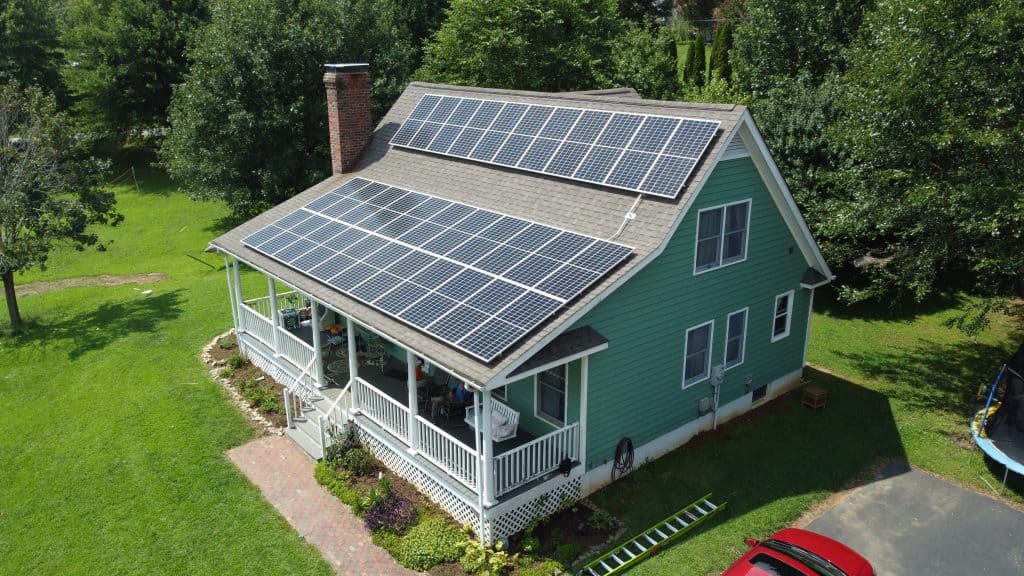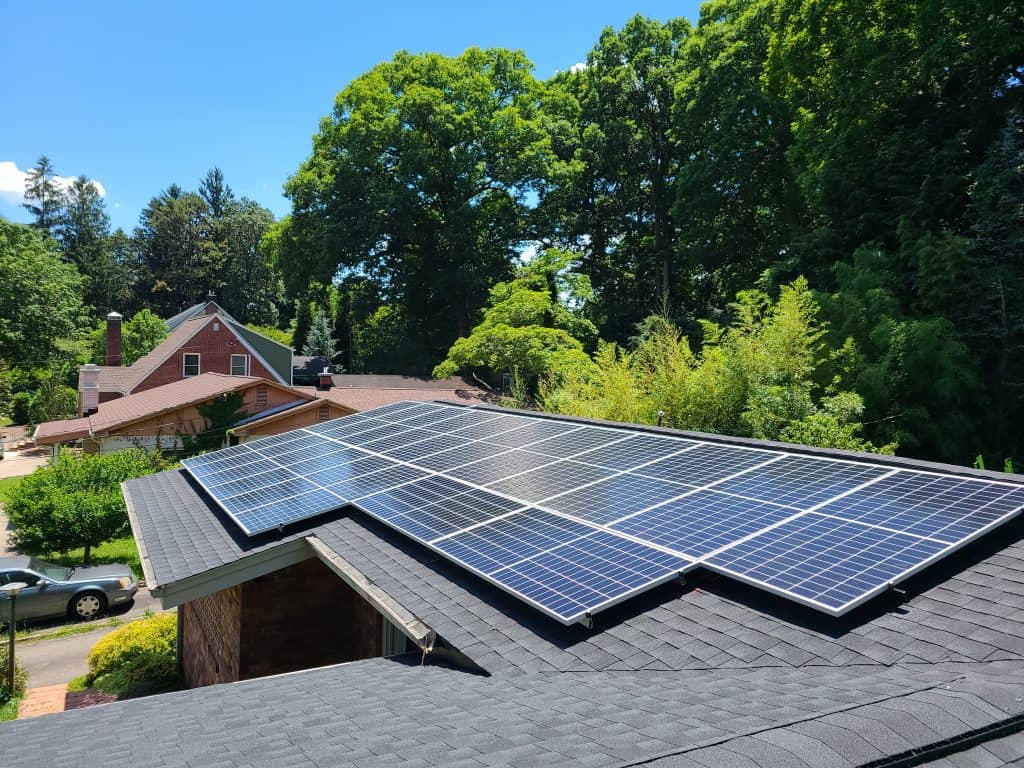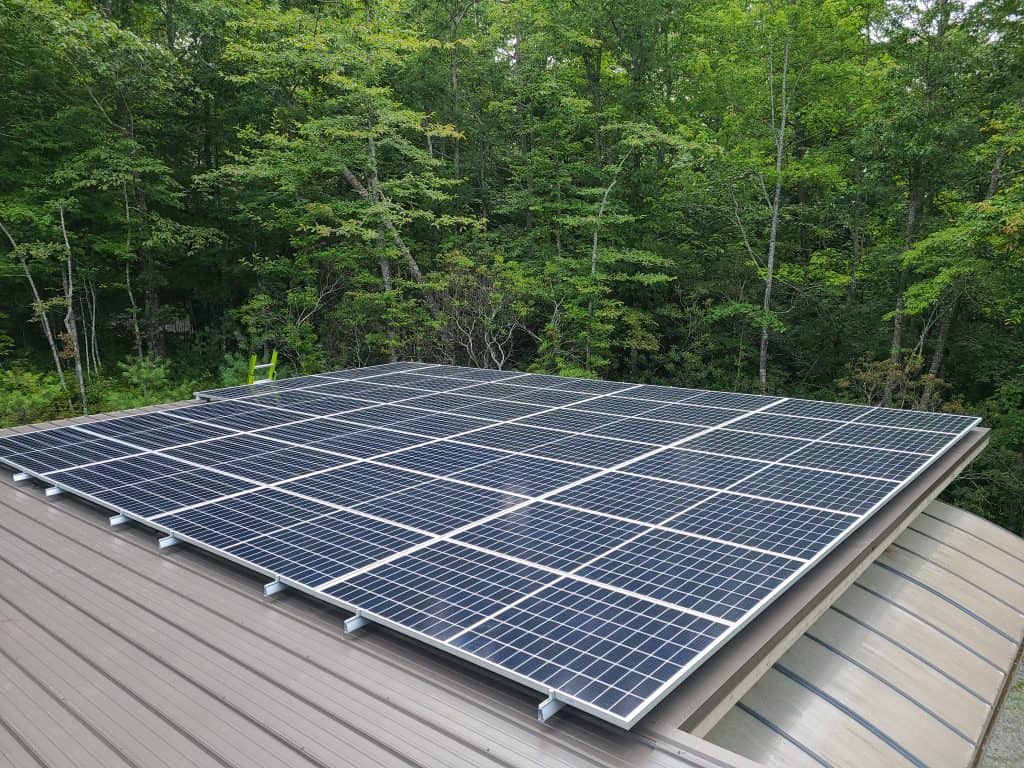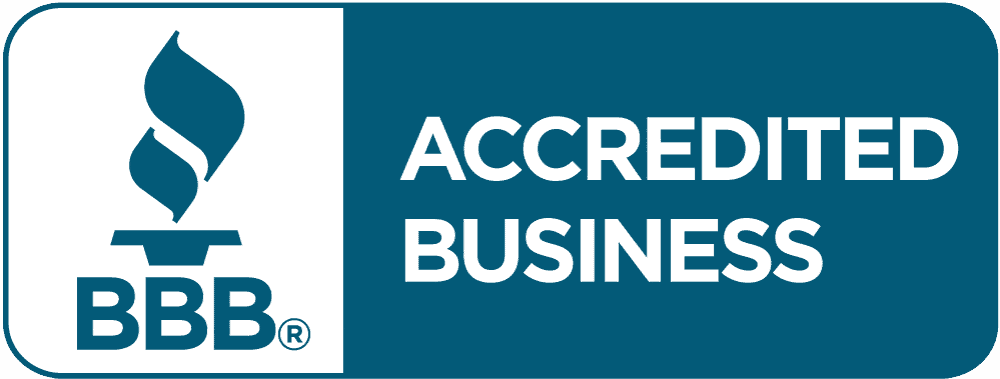How Long Does A Solar Panel Last?
The life expectancy of a solar panel depends on a number of key factors including:
- Type of solar panel or solar module
- The solar panel location in regards to sun, shade, weather, and debris.
- The solar panel degradation rate described by the manufacturer.
The Lifespan of A Solar Panel
Rate of Degradation
Energy Production
Levels of Efficiency Over Time
A solar panel’s output is described by its “Standard Test Conditions” or STC. These conditions occur in a laboratory setting, where 1000 watts per meter squared of light, or photons, are directed at the panel with an ambient temperature of 77 degrees fahrenheit. These ideal test conditions are rarely found to be occurring outside of a laboratory setting. Therefore it is expected that a solar panel’s production will be about 10 % less than the STC rating on the panel. This would be called a solar panel’s Nominal Operating Cell Temperature (NOCT). This rating is typically provided on a solar panel spec sheet, and is a more realistic measure of a solar panel’s average output.
Peak Efficiency
The peak efficiency will occur in the first 6 months to 1 year of the system being installed. The output of a solar system is affected by both the temperature and irradiance (or sun light) hitting the panel. A perfect day for maximum solar production is a cold day where the sun is directly hitting the panel without shade. This is due to the power law of Volts x Amps = Watts. The panel Voltage is going to be adversely affected by heat, so the hotter the panel gets the lower the panel Voltage will be. The Amperage will be directly affected by how many photons are directly hitting the surface of the panel. So on a sunny day, more photons will hit the panel and the panel Amperage will be higher. High Voltage and high Amperage will create the most Watts, so a cold day with lots of direct sunlight will produce the highest Wattage.
So what happens to solar panels after 25 years?
Solar panels will continue to produce electricity after 25 years, albeit at a lower efficiency than when new. Most efficiency loss occurs in the first 5 years, before leveling out and only decreasing in small percentages for the remainder of the panels lifetime. This is known as a solar panel’s degradation curve.
So What Factors Impact the Performance and Lifespan of Solar Panels?
Why Do Solar Panels Degrade?
Solar Cells Face Damage Over Time
- Even in moderate climates solar panels face degradation. This is due to the direct sunlight and UV rays hitting the panel. Over time this will cause the solar cells inside the panel to become less efficient.
- In extreme climates the rate of degradation can be increased. This can be due to heavy snow loads, ice, heavy rainfall, and high temperatures that will cause hardening of the solar cells, cell contamination, and frame corrosion, which will reduce their overall efficiency over time.
- Solar Irradiation will also have an effect on panel efficiency. As mentioned above there will be degradation associated with the amount of solar irradiation hitting the panel.
- Debris buildup will also cause efficiency loss. This can be due to debris such as dust, snow, and pollen accumulating on the front of the panel and reducing the amount of photons hitting the cells, therefore reducing the Amperage of the system and resulting in efficiency loss. In the Asheville area, careful attention to debris buildup is important due to snow, tree branches, and bird droppings.

Can You Make Your Solar Panels Last Longer?
Yes! You can take steps to help maintain efficiency levels & extend the life of the panels.
Regularly Cleaning Your Solar Panels
While many solar systems are low maintenance, it can be beneficial to make routine maintenance checks on your system. Cleaning the panels of debris such as dust, pollen, and snow, can reduce the overall efficiency loss associated with solar degradation.
Want to get an in depth look on cleaning your solar panels? Check out our blog post Solar Panel Cleaning: Is it Necessary?
Regular Maintenance
Regularly get your panels inspected and checked by your installer. In today’s solar market, this can typically be done remotely with module level monitoring. Check to see if your installer provides free lifetime monitoring for the system!
Inspect the inverter. Keep debris clear around the inverter allowing for proper airflow and cooling.
Monitoring of Your System
Regular monitoring of your solar system through the inverter or a third party monitoring system is crucial. This gives the owner and monitoring partner real time metrics on the systems production, state of the inverter, and in many cases panel level monitoring. This can go a long way in ensuring the system is working properly and no issues are arising that can cause production loss.


Are Solar Panels Still Worth the Cost?
Yes! The average solar system for a residential home has a return on investment of 8-15 years and 8-12 years for a larger commercial project. Much quicker than the warrantied life or the actual life of the system. After a system has paid itself off, it will continue to produce energy and will begin saving the owner costs on future utility charges.
The efficiency loss for a solar PV system is miniscule compared to total electricity generated. Any electricity generated is 100% more efficient than a roof with no solar at all! Also, with a quality solar installer, the panel degradation will have been taken into account and included in the total feasibility study of the project, both financially and solar productivity wise.
Product Warranties & Production Guarantees
Solar panels will typically come with two types of warranties. Those being the following: Product Warranty and Production Warranty, or Production Guarantee.
The Product Warranty will cover the integrity of the panel itself and will protect against problems such as manufacturing defects, premature wear and tear, and environmental issues. This is warranting the actual panel components, such as the glass, aluminum framing, solar cells, and electrical components.
The Production Warranty or Production Guarantee will cover the panels’ total production over time at STC.
For example, if a 300W panel has a Production Guarantee of 85% of the original maximum power output (Pmax) after 25 years. The manufacturer is warranting that the panel will produce a minimum of 255W in its 25th year under STC (300W x 85% = 255W). These warranties will typically be seen as curves over the 25-year lifespan of the panel.
Warranty Periods
Product warranties are typically 12 years, while almost all production guarantees are 25 years. There are however products available with 25-year product warranties and 30-year production guarantees. The production guarantee will also often be different depending on the manufacturer. For example, a moderate production guarantee would be 80% of Pmax after 25 years, while a more robust product will have between 85% to 90% or so after 25 years. It is important to speak with your installer to find the correct product warranty to work with your system.
Inverter manufacturers 5- 25 years. Inverters are typically warrantied for 5 years, 10 years, 12 years, 20 years, or 25 years. This will depend heavily on the inverter manufacturer and product type. For example robust hybrid (battery capable) inverters are often warrantied for between 5-12 years, while standard grid-tied inverters are often warrantied at 12 years. Microinverters are typically warrantied for 25 years, and often, string inverters can have their warranties extended to 25 years as well for a fee. It is again important to speak with your installer to find the best-suited inverter and warranty for your specific project.
Racking manufacturers – 25 years. Most racking manufacturers warranty their parts for 25 years.
Rhino Renewables workmanship warranty – 10 years. Here at Rhino Renewables, we carry a 10-year workmanship warranty. This warranties our workmanship on the project, while the products themselves are warrantied by the manufacturer.
Rhino Renewables monitoring guarantee – Lifetime of the system.
Extra Costs
- It can occasionally be necessary to replace a string inverter around 12-15 years after installation. Purchasing the extended warranty option will eliminate the inverter replacement cost down the road, and is usually under $400.
- Enphase Micro inverters are warrantied for 25 years, and are often a go to choice for this reason.
How do you dispose of / What should you do with old solar panels?
Solar Panels and their Recycling Process
Solar Panels and their Recycling Process
The recycling process for solar panels has improved over the years. There are now ways to separate the glass and aluminum to be recycled on their own. The silicone and other elements of the solar cell are then heated to extreme temperatures where they separate. This allows for the silicone to be reused for future solar panels and other silicone based products.
Solar Panel Disposal
Solar panels should not be disposed of into the landfill. They can be recycled which further reduces the carbon footprint of the solar system throughout its lifetime.
Common Solar Questions
What happens to solar panels after 25 years?
– They will continue producing at a slightly lower efficiency.
What is the solar panel degradation curve?
– This is a steep curve at first that levels off after the first 3-5 years. This graph represents the decrease in efficiency at the beginning of the system’s life which levels off and only decreases at a miniscule percentage for the rest of the system’s life.
Can solar panels last 40 years?
– Yes, The solar panels used for the space station have been in use since 1984. That is 37 years and counting! To add to that, solar panels in space actually degrade faster than the ones on earth (although this depends on the type of solar panel being used). This is due to the fact that space is a more caustic environment for the panels due to high radiation levels and no protection from earth’s atmosphere. Solar panels in space are also typically made of different materials than those on earth, but we’ll save that for another blog!
Is Solar Right For You?
Reach out to your local Asheville experts at Rhino Renewables and find out how much you can save by going solar!
Related Posts
Choosing the Right Solar Program in North Carolina for You
Save Big with Duke Energy Progress and Duke Energy Carolina’s PowerPair Solar and Battery Incentives Are you considering switching to solar energy? Now is the...
Read MoreUnderstanding the Depreciation of Solar Energy Property in MACRS
In the ever-evolving landscape of renewable energy, businesses seek certainty and incentives to make impactful, long-term investments. One crucial aspect contributing to the growth of...
Read MoreEmpowering Solar Energy: The Role of Smart Electrical Panels in Efficient Energy Management
Introduction: In the ever-evolving landscape of renewable energy, the demand for reliable and efficient energy backup systems is on the rise. As battery technology enhances...
Read More





